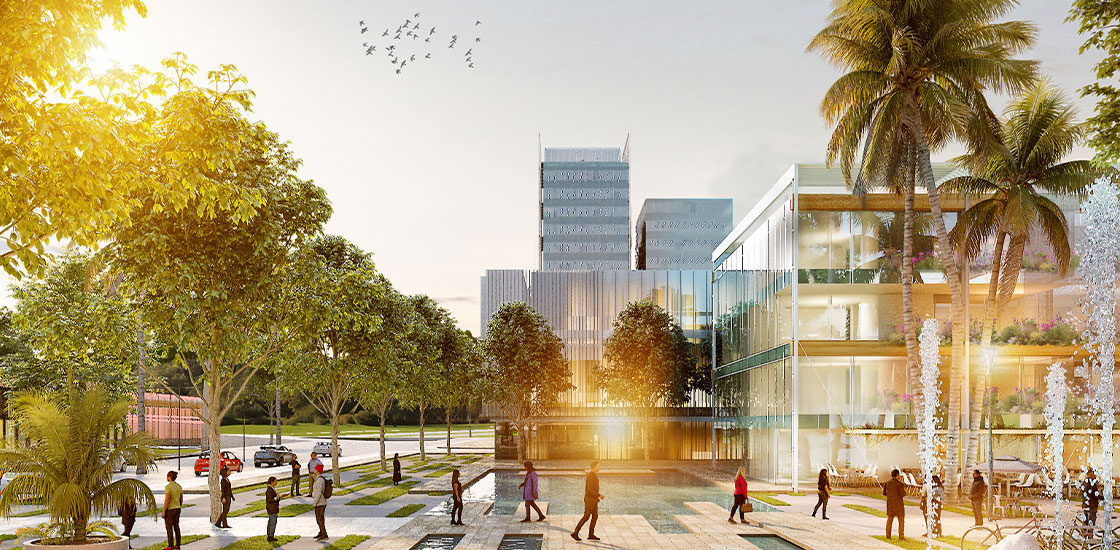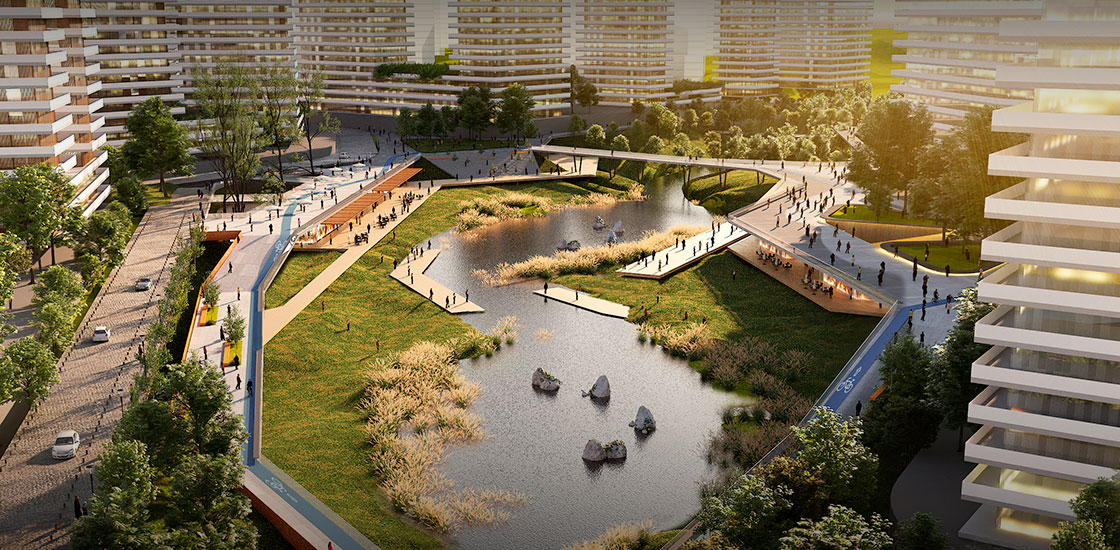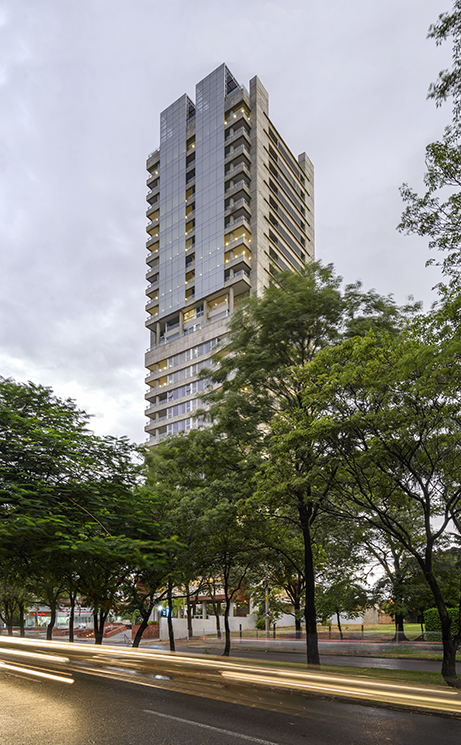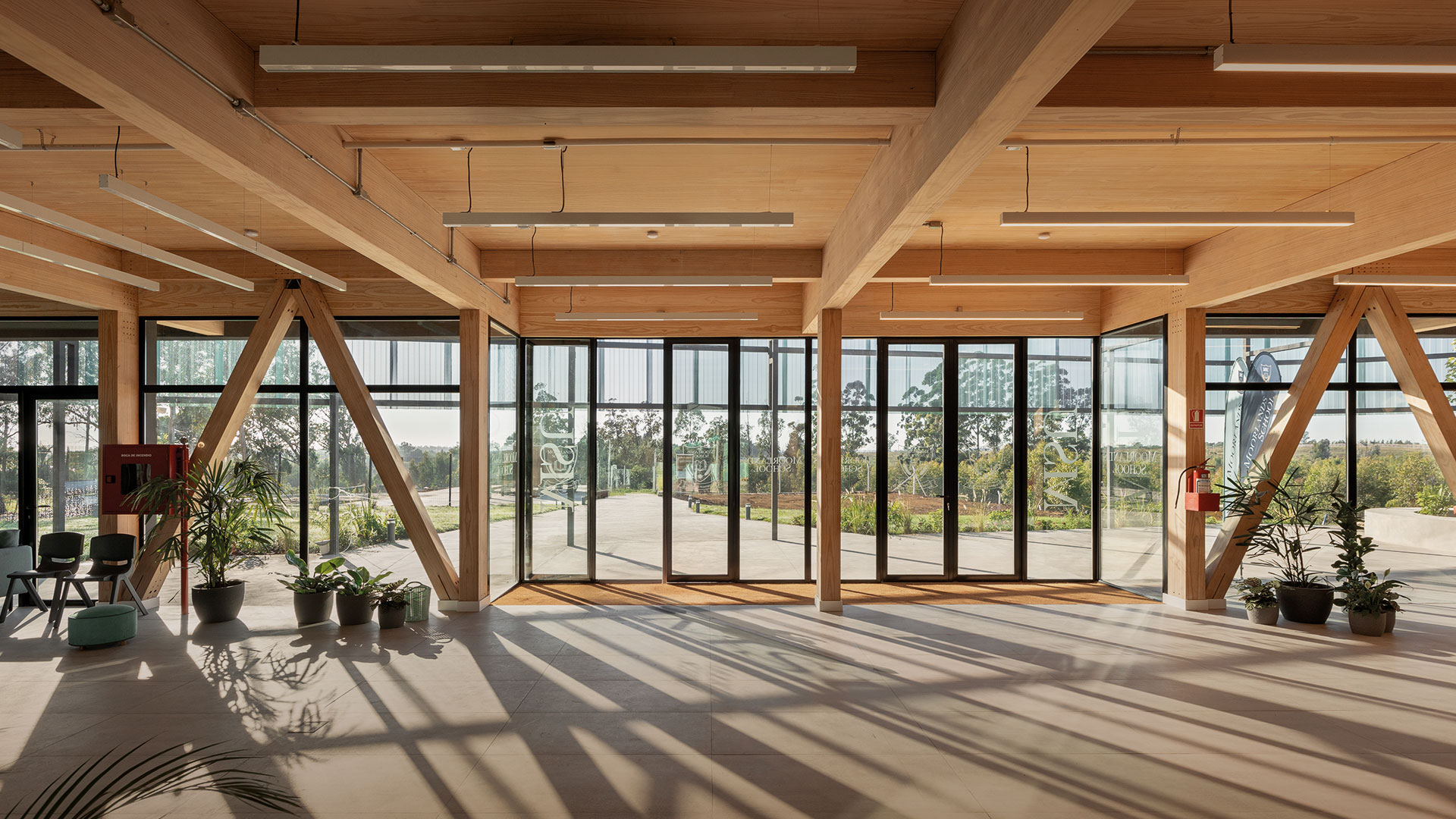

Publication date: 15/8/2025
Reading time: 7 minutes
As cities grow and climate change intensifies, a new generation of materials and construction systems is emerging, redefining the built environment. From “mossy cement” to mass timber and 3D-printed structures, these innovations are expanding the palette with which we shape our cities.
Today, architecture is experiencing a creative renaissance, driven by the observation of nature and empowered by cutting-edge digital tools. Inspired by organic growth patterns—such as coral structures, cell division, or plant morphology—architects are exploring new ways to design spaces that not only mimic natural beauty but also replicate its efficiency and adaptability. Thanks to digital technology, it is now possible to translate these biological processes into complex and elegant geometries using parametric software and procedural modeling. In this way, architectural design becomes a laboratory for experimentation, where iteration and formal evolution are as important as the original idea.
Artificial intelligence further amplifies this potential by analyzing natural patterns and suggesting innovative construction solutions, optimizing materials and forms to achieve more sustainable and efficient structures. The result is a new generation of architects capable of creating pavilions, spatial sculptures, and buildings that replicate organic growth. This approach not only redefines architectural aesthetics but also opens the door to new materialities: sustainable, intelligent, and adaptive materials that respond to the needs of both the environment and users. Thus, nature-inspired architecture, enhanced by technology and AI, paves the way for a more innovative, flexible, and resilient future.
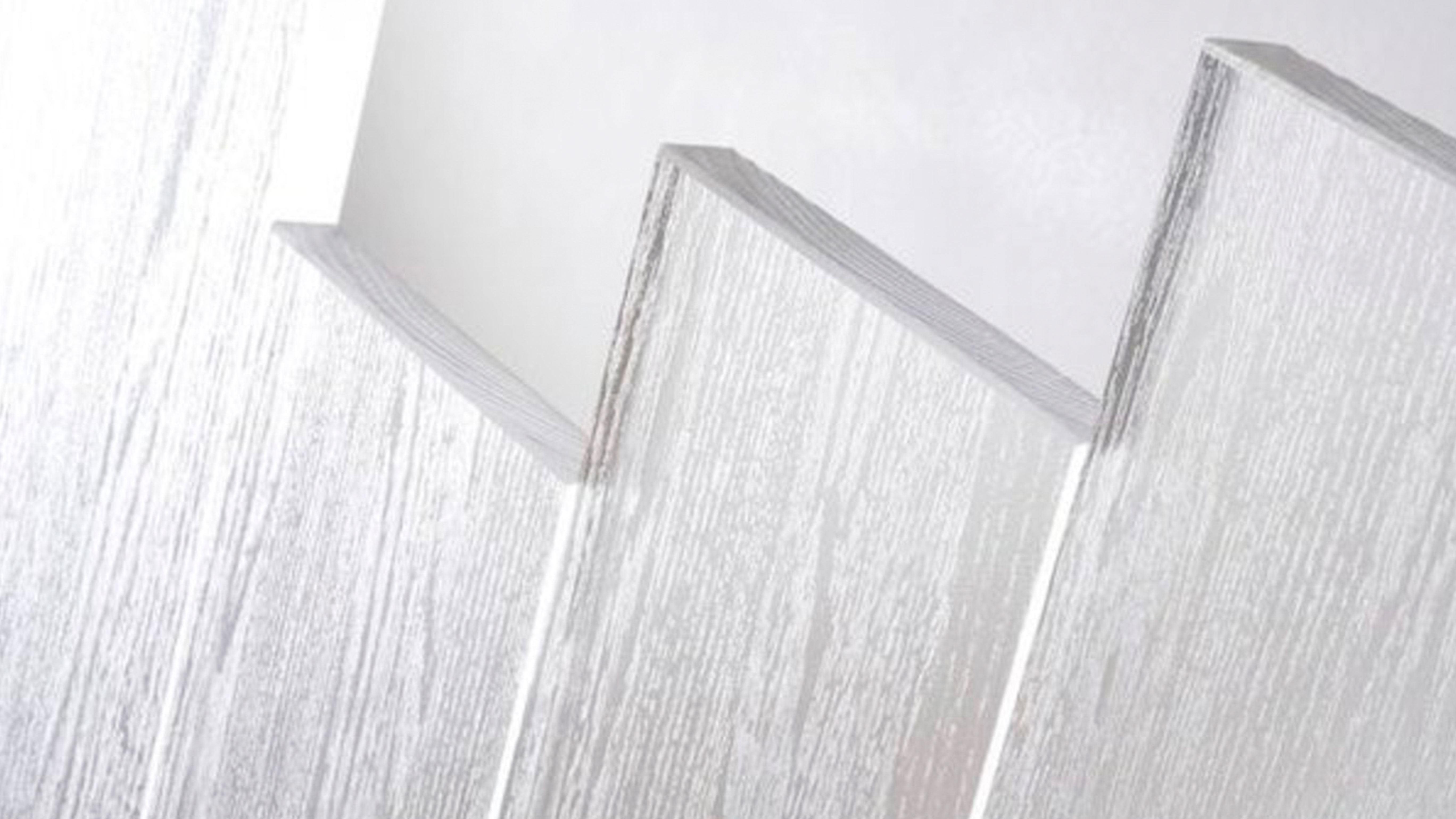
Transparent Wood: A Clear Future
Transparent wood is opening up new possibilities in architectural design by combining energy efficiency, sustainability, and innovative aesthetics. Developed from resin-treated wood, this material offers superior thermal insulation and an ecological alternative to traditional glass. It is already being used in windows, screens, and semi-transparent solar panels, reducing environmental impact. Its production, increasingly efficient and less polluting, promises to transform construction and design. Moreover, being made from renewable resources, it helps reduce the sector’s carbon footprint. The Royal Institute of Technology (KTH) in Stockholm has been a pioneer in developing this innovative material, led by researcher Lars Berglund. Recently, his team succeeded in producing transparent wood using hydrogen peroxide, a more accessible and less toxic chemical than those used in previous attempts. This breakthrough allows for large-scale production without harming the planet or requiring high energy costs. Currently, new applications are being explored beyond the domestic environment, as well as ways to bring this material to industrial settings.
Rethinking Concrete: The Path of Biocement
Concrete is the backbone of modern construction, but it is also responsible for nearly 8% of global CO₂ emissions. In recent years, researchers and startups have been reinventing this ubiquitous material. One of the most interesting developments is biocement, informally dubbed “mossy cement,” which uses bacteria to bind materials, reducing the need for energy-intensive processes. For example, North Carolina-based company BioMason has developed a process in which bricks are “grown” from sand and bacteria, eliminating the need for high-temperature kilns. Their biocement tiles are already used in commercial projects, such as the floor of the H&M store in Stockholm, Sweden. Meanwhile, at Delft University of Technology in the Netherlands, researchers have created self-healing concrete that uses bacteria to seal cracks, extending the lifespan of structures and reducing maintenance.
“Biocement is a paradigm shift,” says Dr. Ginger Krieg Dosier, CEO of BioMason. “We’re not just reducing emissions; we’re fundamentally rethinking how we make and maintain our buildings.”
Like biocement, self-healing concrete uses biological processes to improve the durability and sustainability of structures. This innovative material incorporates bacteria or chemical agents that, upon detecting cracks, activate a healing process that automatically seals the fissures. This technology extends the lifespan of structures and significantly reduces maintenance costs. A notable example is the experimental project in Rotterdam, where self-healing concrete has been applied to a series of pedestrian bridges and bike paths. The initiative, led by Delft University of Technology (TU Delft), aims to ensure the durability of these infrastructures and minimize future interventions, marking a step forward toward more sustainable and resilient cities.
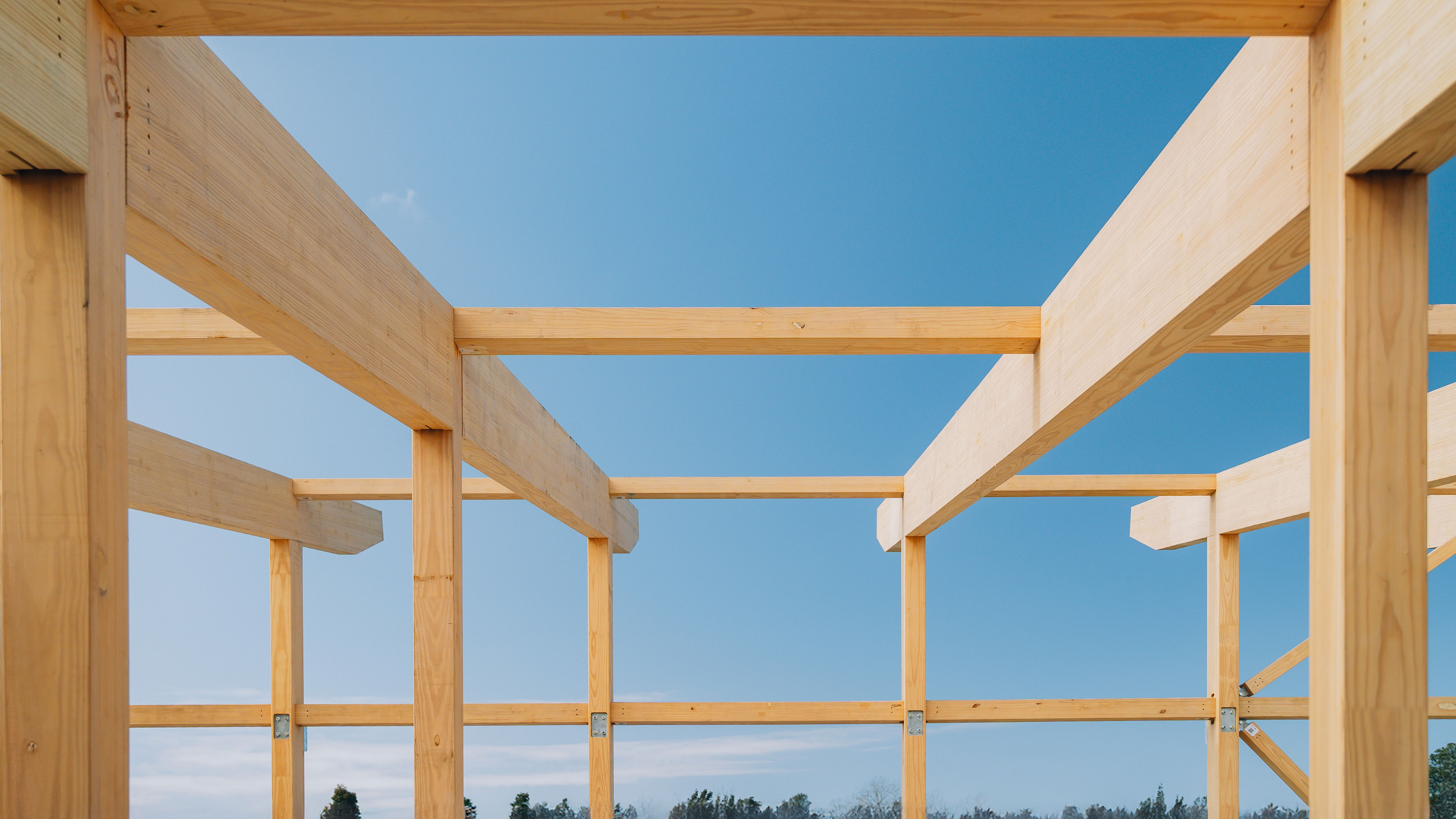
Mass Timber: The Renaissance of Wood
Wood is one of humanity’s oldest building materials, but engineered products like cross-laminated timber (CLT) are rewriting the rules. Strong, lightweight, and capable of sequestering carbon, mass timber allows for the construction of tall buildings with a fraction of the environmental impact of steel or concrete. The 18-story Mjøstårnet in Brumunddal, Norway, currently holds the title of the world’s tallest wooden building, proving that wood can reach new literal and figurative heights. In the United States, the 25-story Ascent tower in Milwaukee, Wisconsin, is a residential building constructed primarily with mass timber, confirming the material’s viability for urban skyscrapers.
The choice of construction technology for the Moorlands educational project in Canelones, Uruguay, aligns with a pedagogical approach in tune with the international trend of creating innovative spaces, known as Innovative Learning Environments. The building is developed from a reinforced concrete slab foundation, a CLT (Cross-Laminated Timber) wood structure, and exterior metal columns—elements that were decisive in the final definition of the geometry and architectural resolution of the proposal.
3D Printing: Customization and Efficiency
3D printing, or additive manufacturing, is moving from the realm of prototypes to large-scale building construction. By depositing material only where needed, 3D printing minimizes waste and offers great design freedom. In Austin, Texas, ICON has partnered with Lennar to build the world’s largest 3D-printed neighborhood, with homes made from a proprietary concrete mix. In the Netherlands, “Project Milestone” in Eindhoven saw the completion of the country’s first 3D-printed house, while WASP in Italy has printed entire homes using local clay and agricultural waste.
“3D printing is not just about speed, but about rethinking the entire construction process,” says Jason Ballard, CEO of ICON. “We can create more affordable, resilient homes tailored to the needs of each community.”
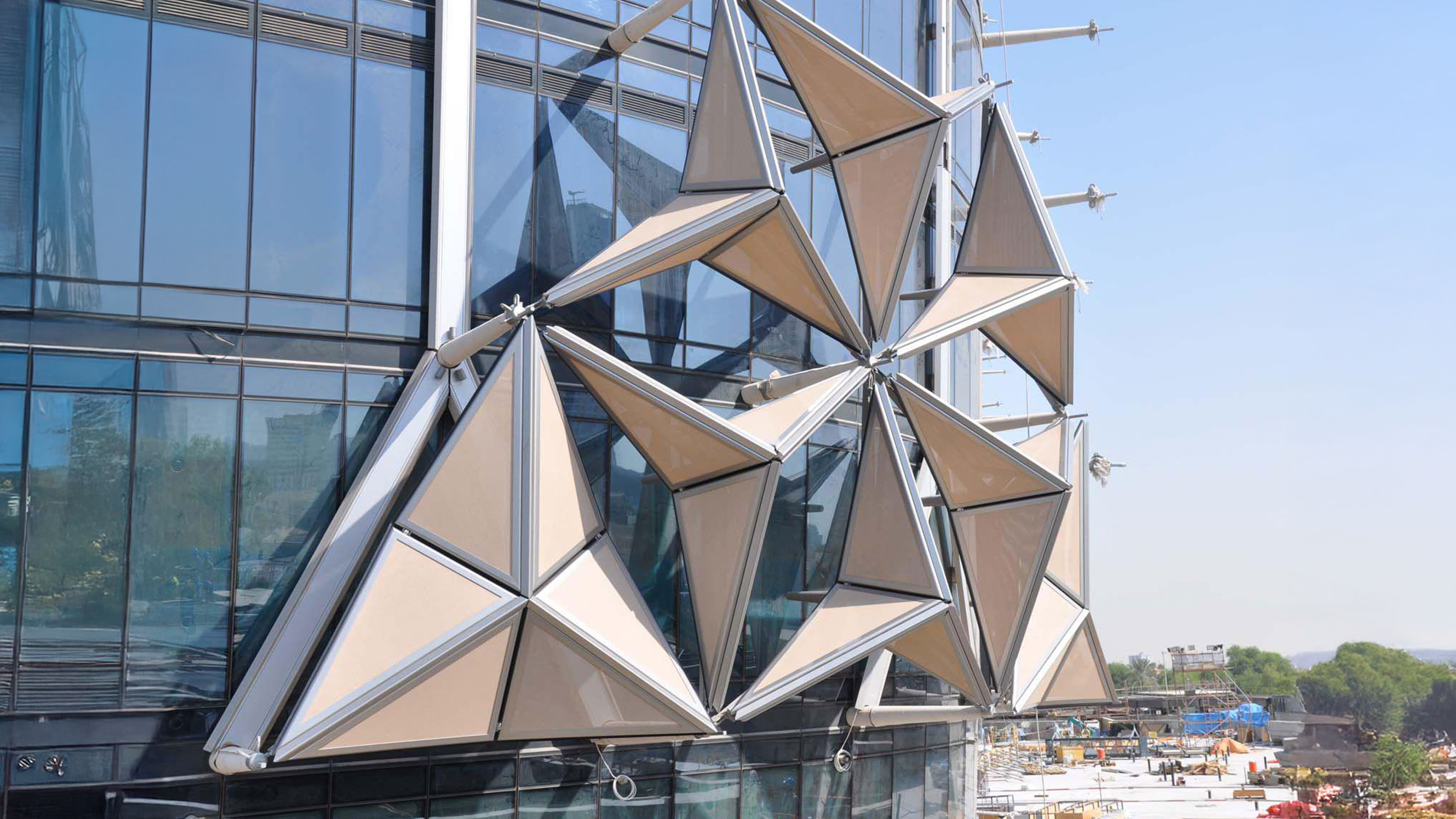
Smart Facades and Adaptive Envelopes
Beyond the structure, the “skin” of buildings is also evolving. Dynamic facades—incorporating materials that respond to sunlight, temperature, or air quality—are making buildings more energy-efficient and comfortable.
“Adaptive facades are the next frontier in sustainable design,” says Dr. Doris Sung, architect and expert in responsive envelopes. “They allow buildings to interact in real time with their environment, reducing energy consumption and improving occupant comfort.”
The Al Bahar Towers in Abu Dhabi, for example, feature a responsive facade with “mashrabiya” screens that open and close according to sunlight, reducing heat gain and cooling costs. The Edge in Amsterdam, considered one of the greenest office buildings in the world, uses a combination of smart glass and sensor systems to optimize lighting and temperature. In Singapore, the Oasia Hotel Downtown is wrapped in a living green wall, providing natural insulation and improving air quality.
Hybrid Architecture
These new materials—and many others not covered here, such as hydroceramics, bamboo, aerogel, thermochromic paint, or 3D bioplastics—are a response to new challenges, building on centuries of accumulated wisdom. In many cases, the most sustainable solutions arise from hybrid approaches that combine the old and the new, such as pairing the thermal mass of stone with the lightness of wood, or integrating ancient passive cooling techniques with modern smart systems.
“True sustainability is about learning from the past while embracing the future,” says Pearce. “The best buildings are those that respect their context and climate, regardless of the materials or technologies they use.”
As architects, engineers, and builders venture into new materials and systems, they are creating spaces that are not only more sustainable but also more imaginative and resilient. The next generation of buildings will be as much biological and digital as brick and beam, ensuring our built environment coexists harmoniously with planned, resilient, and sustainable urban development.
